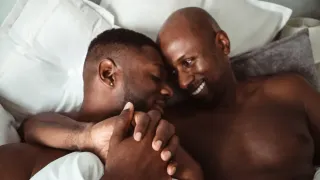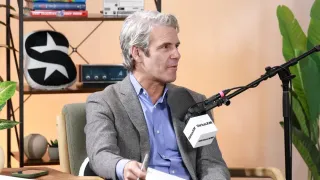
4 hours ago
Queer Clutter, Maximalist Magic: Why LGBTQ+ Spaces Overflow With Meaning
READ TIME: 3 MIN.
If you’ve ever walked into a drag queen’s dressing room, a lesbian’s bookshelf labyrinth, or a trans femme’s altar of affirming objects, you know that queer maximalism isn’t just an aesthetic—it’s a revolutionary act. While the broader culture swoons over Marie Kondo’s gospel of tidy living and The Minimalists’ call to “amplify spaciousness” , LGBTQ+ people are often choosing excess, not as consumerist overload, but as a vibrant, tactile affirmation of who they are and where they belong.
Why? Because for so many in our community, keeping things is political, personal, and deeply emotional. “Any community that really has a sense of place or a sense of culture or a sense of tradition is going to be a rebuke to this flattening, homogenizing, global minimalism,” argues Washington Post book critic Becca Rothfeld in her new book, "All Things Are Too Small: Essays in Praise of Excess" . For queer folks, the objects we keep are proof we exist, that our stories matter, and that our homes are more than just blank canvases—they’re living archives.
Let’s be clear: maximalism isn’t about hoarding or mindless accumulation. It’s about gratuity, about keeping things that aren’t strictly necessary, but that pulse with meaning. Rothfeld’s essay is a love letter to excess as “a compensation for the deficiencies of life on Earth,” a philosophy that resonates deeply in queer circles where chosen families and self-fashioning are survival strategies .
Think of the drag queen’s closet bursting with sequins, feathers, and wigs—each piece a tool of transformation, each outfit a defiant shout against cultural erasure. “Drag queens...are maximalist in all the right ways,” Rothfeld writes. “They’re honest and clever about the self-fashioning they’re involved in” . Every glitter bomb in that closet is a rebellion against the “placeless, global, neoliberal nothingness” minimalism can represent.
For LGBTQ+ people, stuff is often what remains after trauma, migration, or coming out. The rainbow mug from your first Pride, the battered copy of "Stone Butch Blues" gifted by a mentor, the flag you waved at a protest—these aren’t just objects. They’re anchors, talismans, and proof of a journey.
Mainstream decluttering advice tells us to let go, to mourn only “what mattered” when all is lost . But for queer people, what matters is often what others call “extras.” Maximalism is a way to reclaim space in a world that wants us to shrink, to make ourselves invisible.
Queer decluttering isn’t about stripping away. It’s about editing with intention, knowing that letting go of certain things can feel like erasing parts of ourselves. As one decluttering coach puts it, “maximalism is still about only having what you can handle, what you really want in your house, what actually has a place” . For queer people, the “place” is emotional, communal, and historical.
Those who advocate minimalism often say, “There are no sentimental items, only sentimental people” . Queer maximalists reply: “Exactly—and our sentimentality is radical.” The things we keep are not clutter; they are signposts of survival and joy.
Maximalism in queer spaces invites vulnerability. Rothfeld frames excess as a form of openness—a willingness to be seen in all our messy, abundant glory. “It’s actually better to be vulnerable with other people to some extent than to have complete control over your environment,” she argues, challenging the comfort some find in the artificial control of decluttering .
Consider the queer “maximalist” home: photos of chosen family, shelves of queer literature, walls plastered with art and protest posters. These aren’t just decorations—they’re invitations to connection, reminders of battles fought and won, and proof that we are here, together, mess and all.
In a culture that often demands LGBTQ+ folks tidy ourselves into palatability, queer maximalism is a refusal. It’s a celebration of too-muchness, of loudness, of the objects and memories that make us who we are. It’s drag queens in opulent costumes, queer elders with rooms full of memorabilia, trans youth building altars to their own becoming.
As Rothfeld writes, “Individuality—even at the level of a community, like communal personality...is anathema to this kind of minimalism” . Queer maximalism is community, tradition, and history, made visible in every overflowing shelf and crowded closet.
For LGBTQ+ people, the “decluttering movement” isn’t just about tidying up—it’s a negotiation with memory, trauma, and radical self-love. To keep is to remember, to resist, to belong.
So let the world chase empty spaces and colorless calm. In queer homes, let there be abundance—of love, of history, of fabulous, meaningful clutter.
Because sometimes, too much is just enough.






